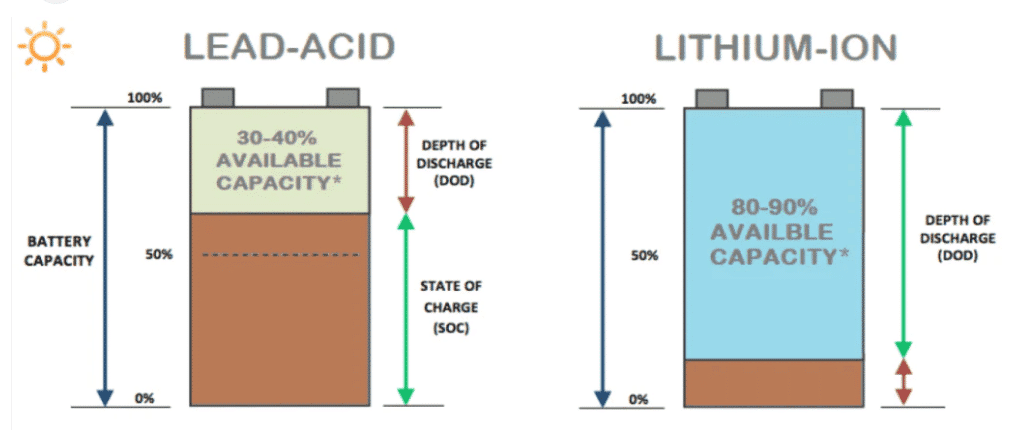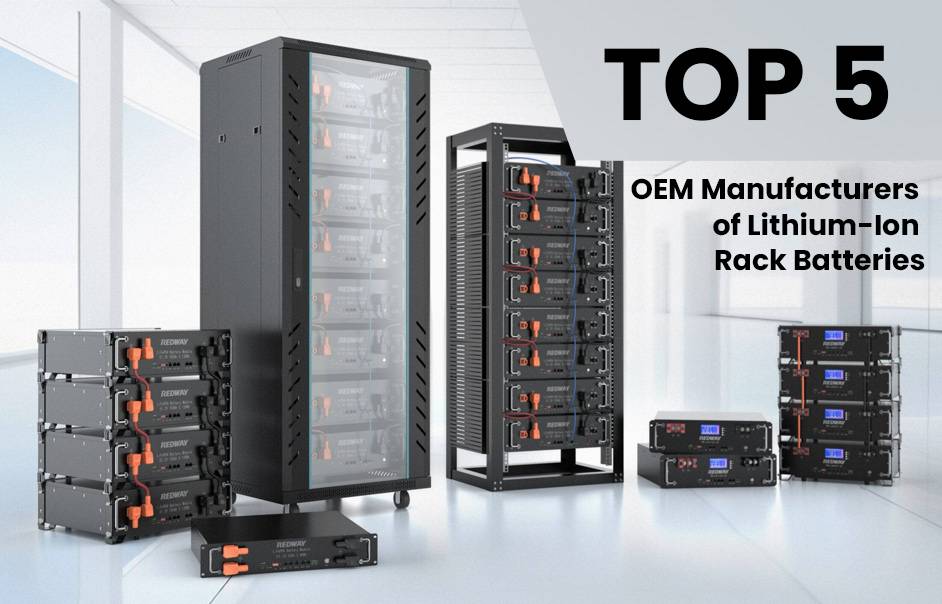- Forklift Lithium Battery
-
48V
- 48V 210Ah
- 48V 300Ah
- 48V 420Ah (949 x 349 x 569 mm)
- 48V 420Ah (950 x 421 x 450 mm)
- 48V 456Ah
- 48V 460Ah (830 x 630 x 590 mm)
- 48V 460Ah (950 x 421 x 450 mm)
- 48V 460Ah (800 x 630 x 600 mm)
- 48V 460Ah (820 x 660 x 470 mm)
- 48V 500Ah
- 48V 560Ah (810 x 630 x 600 mm)
- 48V 560Ah (950 x 592 x 450 mm)
- 48V 600Ah
- 48V 630Ah
-
48V
- Lithium Golf Cart Battery
- 12V Lithium Battery
12V 150Ah Lithium RV Battery
Bluetooth App | BCI Group 31
LiFePO4 Lithium
Discharge Temperature -20°C ~ 65°C
Fast Charger 14.6V 50A
Solar MPPT Charging - 24V Lithium Battery
- 36V Lithium Battery
- 48V Lithium Battery
-
48V LiFePO4 Battery
- 48V 50Ah
- 48V 50Ah (for Golf Carts)
- 48V 60Ah (8D)
- 48V 100Ah (8D)
- 48V 100Ah
- 48V 100Ah (Discharge 100A for Golf Carts)
- 48V 100Ah (Discharge 150A for Golf Carts)
- 48V 100Ah (Discharge 200A for Golf Carts)
- 48V 150Ah (for Golf Carts)
- 48V 160Ah (Discharge 100A for Golf Carts)
- 48V 160Ah (Discharge 160A for Golf Carts)
-
48V LiFePO4 Battery
- 60V Lithium Battery
-
60V LiFePO4 Battery
- 60V 20Ah
- 60V 30Ah
- 60V 50Ah
- 60V 50Ah (Small Size / Side Terminal)
- 60V 100Ah (for Electric Motocycle, Electric Scooter, LSV, AGV)
- 60V 100Ah (for Forklift, AGV, Electric Scooter, Sweeper)
- 60V 150Ah (E-Motocycle / E-Scooter / E-Tricycle / Tour LSV)
- 60V 200Ah (for Forklift, AGV, Electric Scooter, Sweeper)
-
60V LiFePO4 Battery
- 72V~96V Lithium Battery
- Rack-mounted Lithium Battery
- E-Bike Battery
- All-in-One Home-ESS
- Wall-mount Battery ESS
-
Home-ESS Lithium Battery PowerWall
- 24V 100Ah 2.4kWh PW24100-S PowerWall
- 48V 50Ah 2.4kWh PW4850-S PowerWall
- 48V 50Ah 2.56kWh PW5150-S PowerWall
- 48V 100Ah 5.12kWh PW51100-F PowerWall (IP65)
- 48V 100Ah 5.12kWh PW51100-S PowerWall
- 48V 100Ah 5.12kWh PW51100-H PowerWall
- 48V 200Ah 10kWh PW51200-H PowerWall
- 48V 300Ah 15kWh PW51300-H PowerWall
PowerWall 51.2V 100Ah LiFePO4 Lithium Battery
Highly popular in Asia and Eastern Europe.
CE Certification | Home-ESS -
Home-ESS Lithium Battery PowerWall
- Portable Power Stations
How Do Lead-Acid and Lithium-Ion Batteries Compare?

Understanding how lead-acid and lithium-ion batteries compare is crucial for making informed decisions regarding energy storage solutions. While lead-acid batteries are cheaper upfront, lithium-ion batteries offer greater efficiency, longer lifespan, and better performance in various applications. This comparison highlights essential factors to consider when choosing between these two battery technologies.
How Do Lead-Acid and Lithium-Ion Batteries Function?
Lead-acid batteries operate by converting chemical energy into electrical energy through reactions between lead dioxide (PbO2), sponge lead (Pb), and sulfuric acid (H2SO4). In contrast, lithium-ion batteries use lithium compounds as electrodes, with lithium ions moving between the anode (usually graphite) and cathode (lithium metal oxide) during charge and discharge cycles. This fundamental difference in chemistry leads to variations in performance, efficiency, and lifespan.Chart: Basic Functionality Comparison
| Feature | Lead-Acid | Lithium-Ion |
|---|---|---|
| Anode Material | Sponge Lead | Graphite |
| Cathode Material | Lead Dioxide | Lithium Metal Oxide |
| Electrolyte | Sulfuric Acid | Lithium Salt in Organic Solvent |
| Reaction Type | Chemical Reaction | Ion Exchange |
What Are the Key Cost Differences Between Lead-Acid and Lithium-Ion Batteries?
Lead-acid batteries are generally more affordable than lithium-ion batteries, with prices ranging from $500 to $1,000+ for comparable capacities. In contrast, lithium-ion batteries can cost between $5,000 to $15,000. However, while lead-acid batteries may seem cost-effective initially, their shorter lifespan and higher maintenance requirements can lead to greater overall costs over time.Chart: Cost Comparison
| Battery Type | Initial Cost Range | Lifespan |
|---|---|---|
| Lead-Acid | $500 – $1,000+ | 3 – 5 years |
| Lithium-Ion | $5,000 – $15,000 | 10 – 15 years |
How Do Energy Densities of Lead-Acid and Lithium-Ion Batteries Compare?
Energy density is a critical factor when comparing battery types. Lithium-ion batteries typically offer an energy density of around 150–250 Wh/kg, while lead-acid batteries provide only about 30–50 Wh/kg. This means that lithium-ion batteries can store significantly more energy in a smaller and lighter package, making them ideal for applications where space and weight are crucial.
What Is the Cycle Life of Lead-Acid vs. Lithium-Ion Batteries?
Cycle life refers to the number of charge-discharge cycles a battery can undergo before its capacity falls below a certain threshold. Lead-acid batteries usually have a cycle life of 300 to 700 cycles, depending on usage conditions. In contrast, lithium-ion batteries can last anywhere from 1,000 to over 5,000 cycles, making them a more durable option for long-term applications.Chart: Cycle Life Comparison
| Battery Type | Cycle Life Range |
|---|---|
| Lead-Acid | 300 – 700 cycles |
| Lithium-Ion | 1,000 – 5,000 cycles |
Why Are Lithium-Ion Batteries Generally More Efficient?
Lithium-ion batteries are more efficient than lead-acid batteries due to their higher charge retention rates and lower self-discharge rates. They can deliver up to 95% efficiency, meaning nearly all stored energy is usable. In contrast, lead-acid batteries operate at around 50% efficiency, resulting in significant energy losses during discharge.
What Are the Environmental Impacts of Each Battery Type?
Both battery types have environmental implications. Lead-acid batteries contain toxic lead and sulfuric acid that can harm ecosystems if not disposed of properly. However, they are highly recyclable; about 97% of their components can be recovered. Conversely, lithium-ion batteries also pose environmental concerns due to mining practices for lithium and cobalt; however, they generally have a lower environmental footprint over their lifecycle compared to lead-acid batteries.
Tips for Battery Wholesale Buyers
For wholesale buyers seeking reliable battery solutions, Redway Power is an excellent choice. With over 13 years of experience in manufacturing lithium-ion batteries, they provide high-quality products tailored for various applications. When placing OEM orders:
- Research potential manufacturers thoroughly.
- Request samples to evaluate quality before bulk orders.
- Ensure compliance with safety standards specific to your market.
- Discuss customization options based on your specific needs.
Redway Power Expert Views
“Choosing between lead-acid and lithium-ion technologies ultimately depends on your specific application needs,” states an expert from Redway Power. “While lead-acid may be suitable for short-term or budget-sensitive applications, lithium-ion offers unparalleled efficiency and longevity that can justify its higher initial cost.”

FAQs
Which is better? Lithium vs lead acid battery
Lithium batteries are known for their longer lifespan, higher energy density, and improved efficiency compared to lead-acid batteries. While lead-acid batteries have a lower upfront cost and are easier to install, lithium batteries offer superior performance and longevity.
How much longer do lithium batteries last compared to lead acid?
Lithium batteries typically last 3-4 times longer than lead acid batteries, providing a longer lifespan without losing effectiveness over time. Choose lithium batteries for extended durability and reliable performance.
Lithium batteries typically last 3-4 times longer than lead acid batteries. This longer lifespan ensures extended durability and reliable performance over time. In contrast, lead acid batteries have a shorter lifespan, requiring more frequent replacements and incurring additional maintenance costs.
Considering the superior longevity of lithium batteries, they are the preferred choice for applications that demand durability and long-term performance. In summary, lithium batteries outperform lead acid batteries in terms of lifespan, offering extended durability and reliable performance.
How long does it take to charge lithium-ion vs lead acid?
Is it safe to replace lead acid battery with lithium-ion?


















